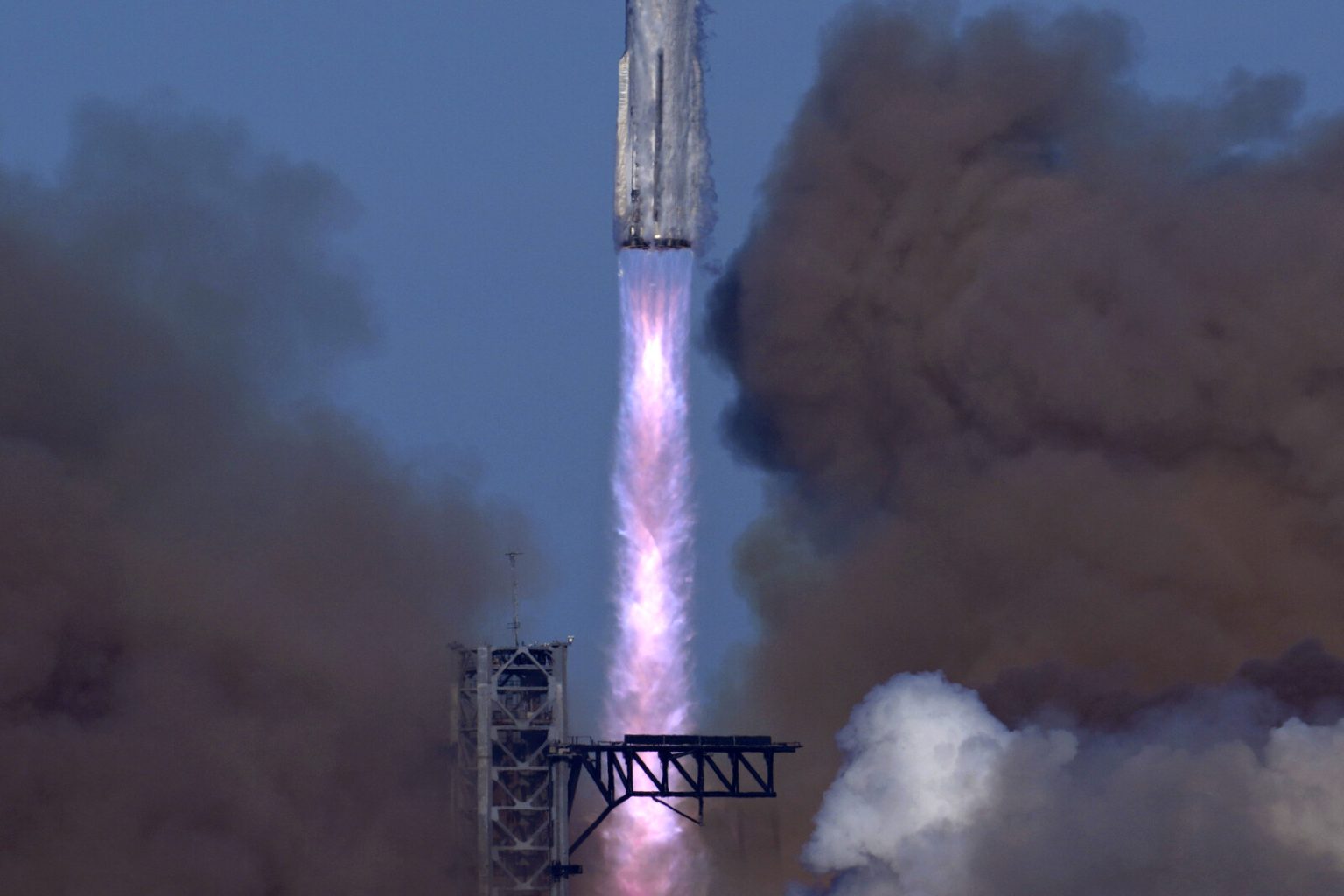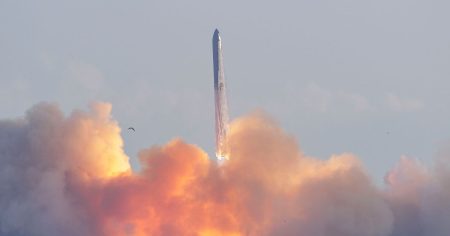Starship, SpaceX’s ambitious venture towards interplanetary travel, encountered a significant setback during its seventh test flight. The colossal spacecraft, a new and upgraded iteration of the prototype, met a premature end just eight and a half minutes after launch, its journey curtailed by a series of engine failures culminating in a fiery explosion over the Gulf of Mexico. This incident, while undeniably a blow to the program’s progress, also serves as a stark reminder of the immense challenges inherent in pushing the boundaries of space exploration. The test flight, intended to assess a crucial satellite deployment maneuver, was closely monitored by SpaceX engineers and space enthusiasts alike, holding the promise of further validating Starship’s capabilities and inching closer to the ultimate goal of Mars colonization. However, the abrupt termination of the flight underscored the complex interplay of factors involved in such ambitious endeavors and the inherent risks associated with testing cutting-edge technology in the unforgiving environment of space.
Despite the spacecraft’s demise, the launch did offer a glimmer of success. The Super Heavy booster, the gargantuan first stage responsible for propelling Starship into the upper atmosphere, performed flawlessly. After separating from the spacecraft, the booster executed a controlled descent back towards the launch site at Starbase in Boca Chica, Texas. In a dramatic display of engineering prowess, the massive rocket was then captured by the ”Mechazilla” catching arms, a towering structure designed to retrieve and secure the returning booster. This successful recovery marked a significant achievement for SpaceX, demonstrating the viability of their reusable rocket technology and paving the way for more cost-effective space launches in the future. The reusability of the booster stage is a cornerstone of SpaceX’s long-term strategy, aiming to drastically reduce the cost of accessing space and making ambitious missions like Mars colonization economically feasible.
The exploded Starship prototype represented a significant leap forward in design compared to its predecessors. This new iteration incorporated upgraded engines and structural enhancements, all aimed at improving performance and reliability. The planned orbital flight over the Gulf of Mexico was designed to test a critical maneuver for deploying satellites, a crucial capability for both commercial and scientific applications. This maneuver involves the controlled release of payloads into orbit after Starship reaches its designated altitude, a complex process requiring precise timing and coordination. Had the flight progressed as planned, the successful execution of this maneuver would have marked a crucial milestone in Starship’s development, validating its potential as a versatile platform for a wide range of space-based activities.
The seventh test flight of Starship carried significant weight, not just for SpaceX but also for the broader space exploration community. The US space agency, NASA, has contracted SpaceX and Starship for crucial elements of its Artemis program, the ambitious endeavor to return astronauts to the Moon later this decade. Starship is slated to serve as the lunar lander, ferrying astronauts from the lunar Gateway, a space station orbiting the Moon, down to the lunar surface. The success of Starship is therefore intrinsically linked to the success of the Artemis program and humanity’s return to the Moon. This incident underscores the challenges that remain in developing reliable and robust space transportation systems capable of fulfilling such ambitious goals.
Elon Musk, the visionary founder and CEO of SpaceX, has long championed Mars colonization as the ultimate objective of his spacefaring endeavors. Starship, with its immense size and projected payload capacity, represents the cornerstone of this ambitious vision. Musk envisions Starship as the vehicle that will eventually transport humans and supplies to Mars, establishing a permanent human presence on the red planet. This incident, while a setback, is unlikely to deter Musk’s unwavering commitment to this long-term goal. The iterative development process, characterized by testing, learning from failures, and continuous improvement, is fundamental to SpaceX’s approach, and this latest setback will undoubtedly provide valuable insights that will inform future Starship designs.
The explosion of the Starship prototype during its seventh test flight serves as a poignant reminder of the complexities and inherent risks associated with pushing the frontiers of space exploration. While the loss of the spacecraft is undoubtedly a setback, the successful recovery of the Super Heavy booster provides a glimmer of hope and demonstrates the progress being made in reusable rocket technology. This incident, while disappointing, will undoubtedly contribute valuable data and insights that will inform future iterations of Starship, driving SpaceX closer to its ultimate goals of lunar landings and eventual Mars colonization. The journey to the stars is fraught with challenges, but the pursuit of such ambitious goals continues to inspire innovation and push the boundaries of human ingenuity.














